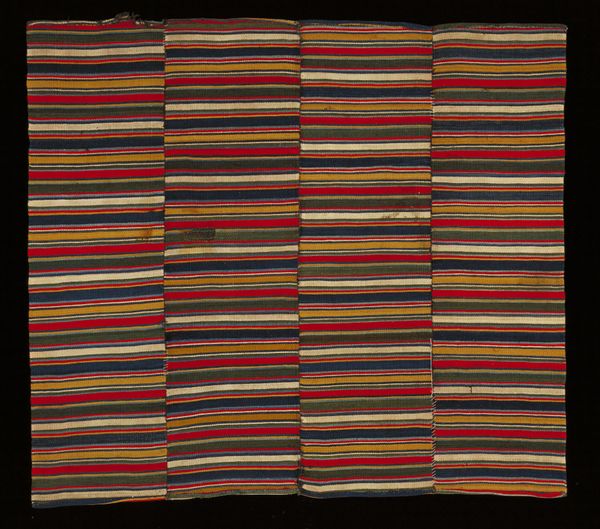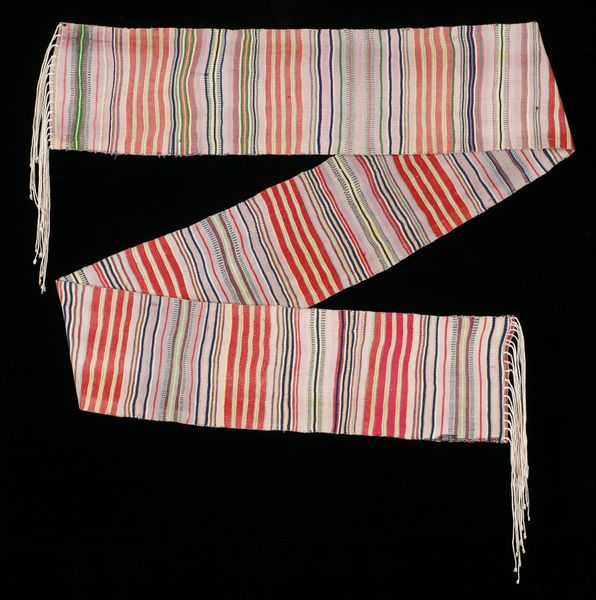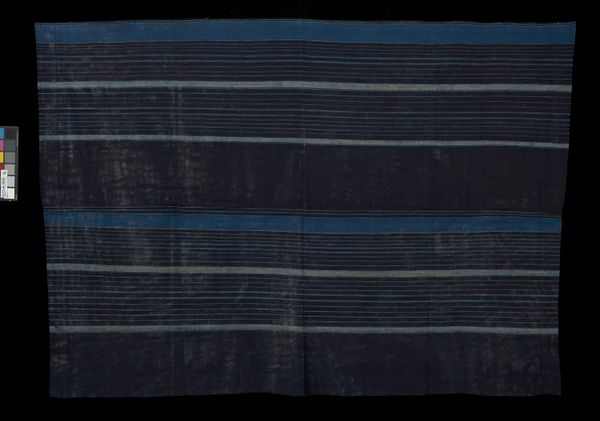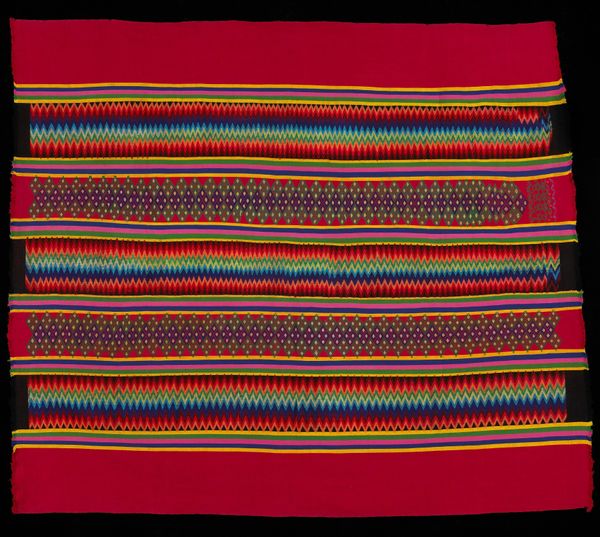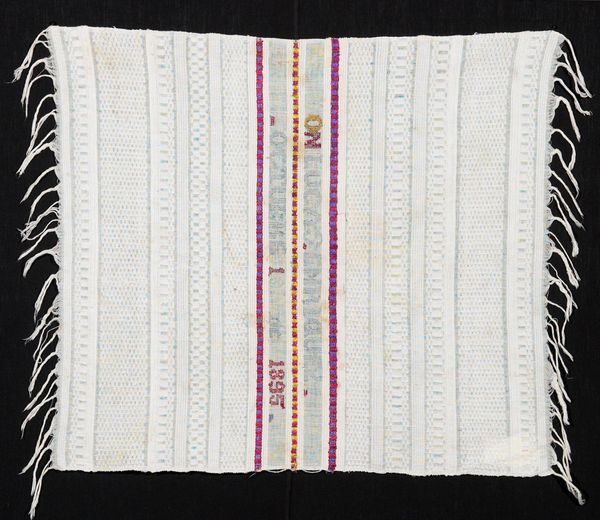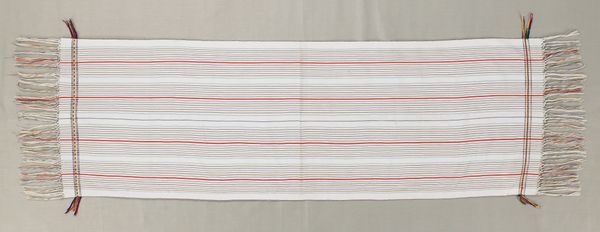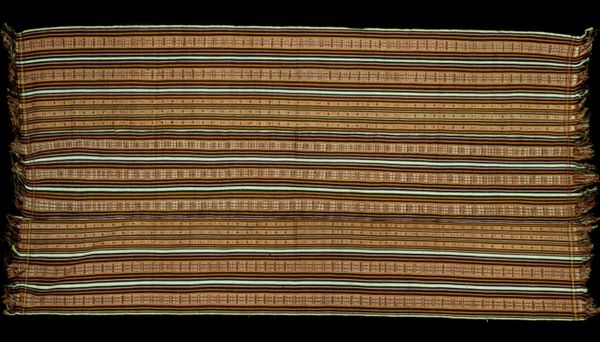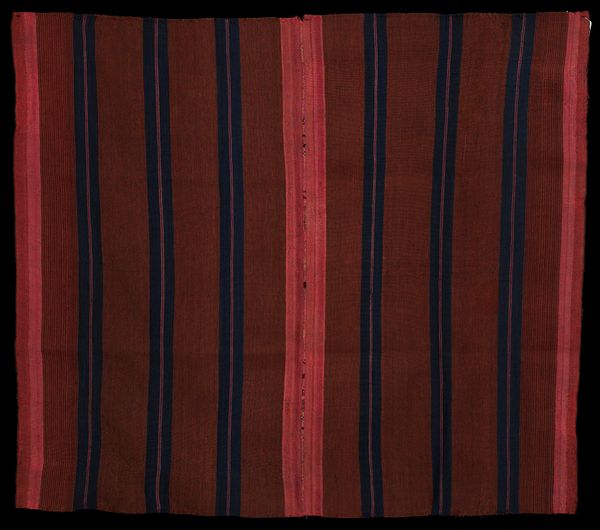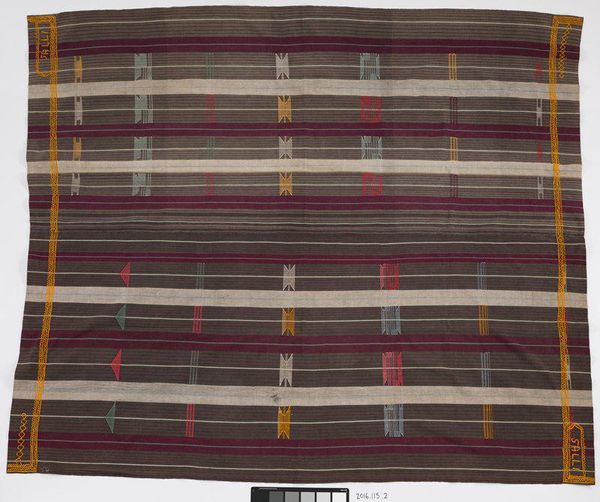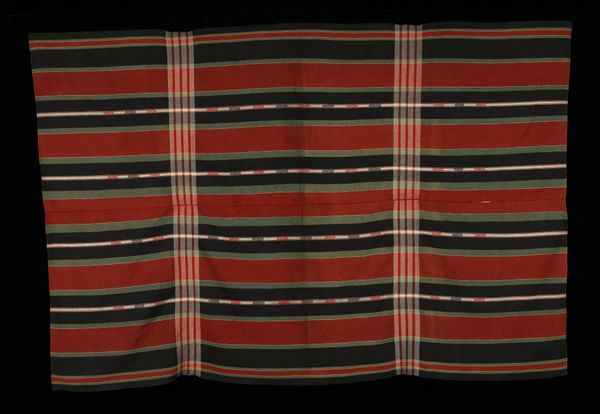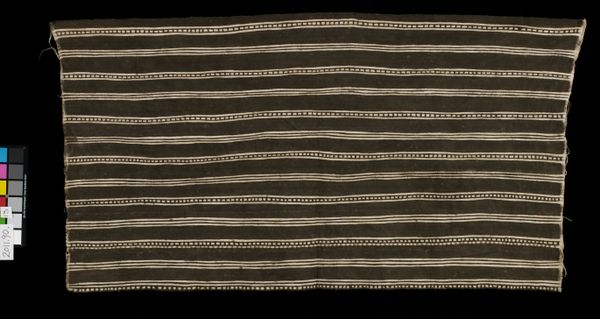
weaving, textile, cotton
#
pattern heavy
#
weaving
#
textile
#
collage layering style
#
fashion and textile design
#
hand-embroidered
#
repetition of pattern
#
pattern repetition
#
cotton
#
textile design
#
yoruba-art
#
imprinted textile
#
layered pattern
#
funky pattern
Dimensions: 70.25 x 32 in. (178.4 x 81.3 cm)(Skirt)
Copyright: Public Domain
Editor: This is an Asa Oke cloth, likely from the 20th century, used as a skirt, from the Yoruba people. It's a cotton textile. I am immediately drawn to the incredible intricacy and rhythm of the woven patterns. How would you interpret this work from a formalist perspective? Curator: It is indeed a fascinating study in textile design. Focus, if you will, on the interplay of line, color, and texture. Observe how horizontal bands of varying widths establish a strong visual cadence. The thin lines provide lightness to the heavier red and neutral areas. What do you notice about the organization of these bands? Editor: I see a clear tripartite division. There’s the band of diverse color lines, the very distinct line, and the diamond-dotted design at the bottom, but I don't see a balanced composition. Curator: Indeed. The asymmetries might be a key element, as this contributes a layer of dynamism to the work. Are the asymmetries calculated or more intuitive? That’s what the expert weaver mediates. And notice that the piece’s meaning can stem from not only its appearance but also its physical construction—the warp and weft, the tension of the threads. Do you find this piece emotionally resonant? Editor: The precision in weaving makes me calm, almost meditative. There's something really captivating in its repetitive patterns. Curator: I would agree. Consider how the textile reflects fundamental aspects of Yoruba aesthetics. A work of art embodies ideas not merely through what it depicts, but how it's put together as a material object. Editor: That’s a perspective I’d never considered! So it’s not about the maker’s intent as much as the relationships within the elements that make up this textile. Curator: Precisely! Form is substance; the structure reveals its own kind of beauty and purpose.
Comments
No comments
Be the first to comment and join the conversation on the ultimate creative platform.
